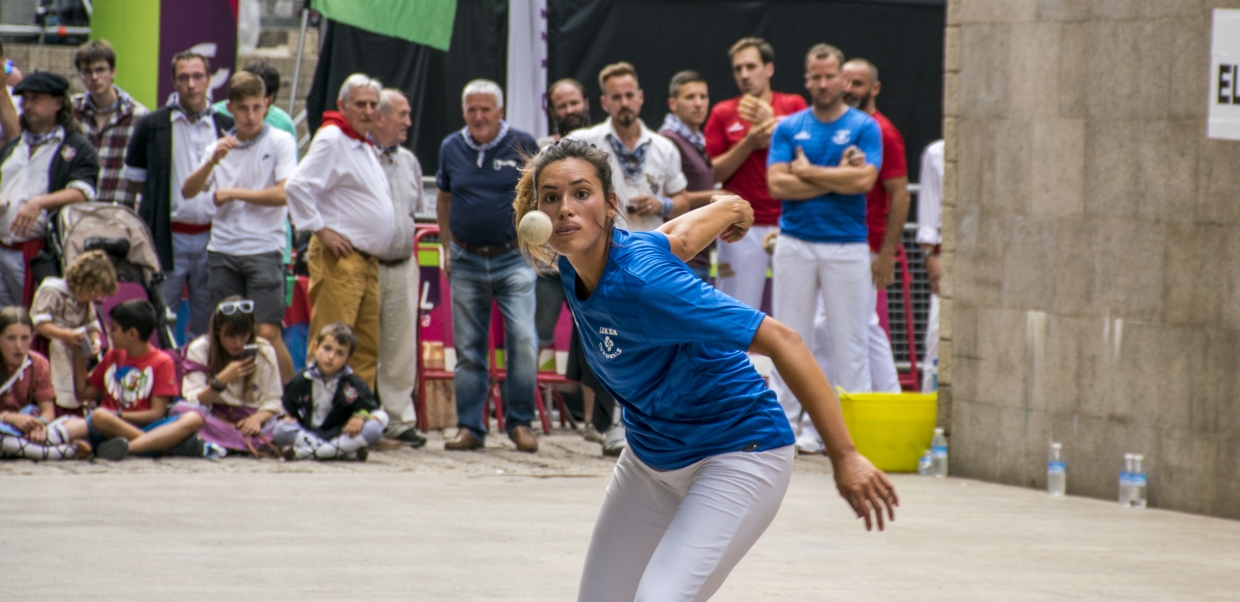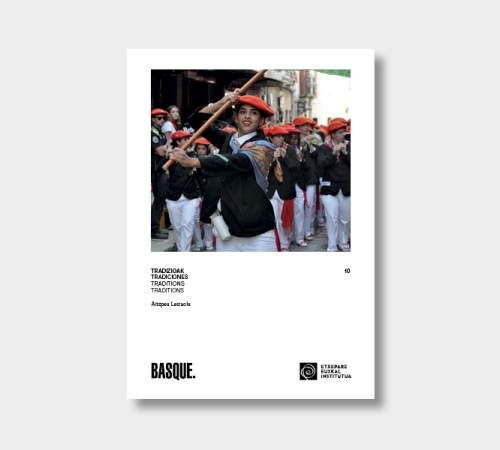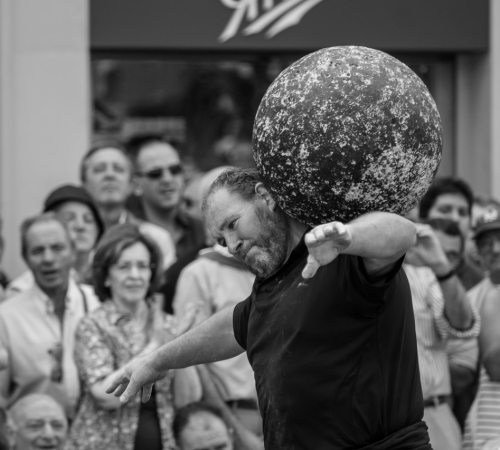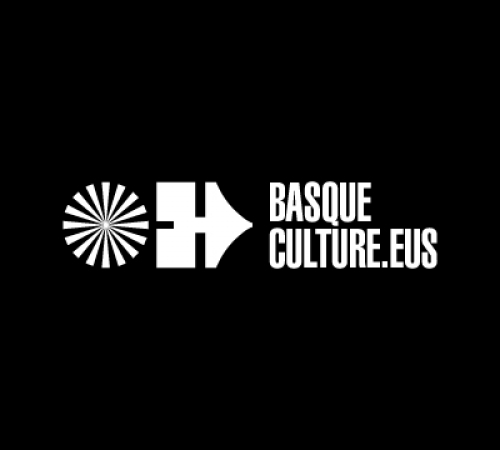Basque pelota
Euskara. Kultura. Mundura.

Rural Basque sport competitions, known as herri-kirolak, originate from the working environment of traditional Basque society. However, some disciplines, like Basque pelota, developed outside the rural environment. Basque pelota, or pilota jokoa, is a sport typically played in the frontons of the Basque Country. To differentiate between the various types of the game, two aspects are considered: the type of court (open court, left-sided fronton, covered fronton, trinquet, etc.) and the equipment used to hit the ball (hand, basket, paddle, xarea, etc.).
Throughout history, entire generations have played ball games in various parts of the world, using meadows and other spaces as improvised courts. These games, originally conceived as entertainment and personal challenges, have become universal and have evolved in various ways. The French Jeu de Paume, the tambourine game, and the hoop game are vibrant traditions that originate from these ancient ball games, with Basque pelota and tennis being direct descendants.
In Navarre, pelota was very popular as far back as the fourteenth century, especially in its bare-handed pelota mano form. Between the seventeenth and nineteenth centuries, the game was refined and expanded through the introduction of variations such as mano, pala, remonte, and cesta punta. The latter was the variant that spread most widely in America, primarily thanks to Basque emigrants. In the twentieth century, the sport became professional, fuelled by international competitions and the construction of frontons in many countries. Among these milestones are the Basque Pelota World Championships, held annually since 1952, which bring together nations that cherish and celebrate this sport.
Pelota mano, mastery in the palm of the hand
Pelota mano is a variation of Basque pelota played with the bare hand. In both individual and doubles formats, two players or two pairs compete by taking turns to hit the ball against the front wall until one side misses, allowing the opponent to score a point. Pelota mano is also played in La Rioja, Aragon and Castilla y León. A similar sport is played in Ireland, Irish handball, played on courts of various sizes, against a left wall or in trinquets.
Cesta punta, the spectacle of Jai alai
Cesta punta is played with a basket called a xistera handia. It is regarded as one of the fastest sports in the world, thanks to the incredible speed of the ball. This variation involves balls weighing between 125 and 140 grams, covered with goat skin, with recorded throws exceeding 300 km/h. It is one of the specialities of Basque pelota recognised by the International Basque Pelota Federation and included the world championships. Today, it is a display of exceptional agility and precision. Among the most popular competitions that draw large audiences are the Jai Alai Winter Series in Gernika and the international tournament in Saint-Jean-de-Luz.
Remonte, rebound basket
Remonte is a form of Basque pelota played with a shallow basket or xistera. The ball enters the lower part of the basket and exits through the tip in a continuous movement. Unlike cesta punta, in which the ball is caught and then hurled towards the front wall, remaining motionless for a moment inside the basket, in remonte the ball never stops. The xistera used in remonte is similar to the basket in cesta punta, but it is less curved, lacks the characteristic deep belly, and is more rigid.
Pala, recreational game
Pala is played with a wooden paddle and usually a rubber ball. It is the most widespread recreational activity, as it is less demanding than other variants. A popular variation is played with a short bat called pala motza, which involves hitting a leather ball with a paddle made of beech or other hardwoods.
Living heritage
Today, Basque pelota holds a prominent place in society, having adapted to different eras while maintaining its essence. Technology and globalisation have allowed this sport to reach far-flung corners of the world, spreading both competition and a passion for the game. Basque pelota is, ultimately, much more than just a sport: it is a tradition that unites generations and an art that blends strength, technique, and passion. Placing the Basque beret, or txapela, on the winner’s head at each championship has become a ritual that directly links to the region’s history and identity.




